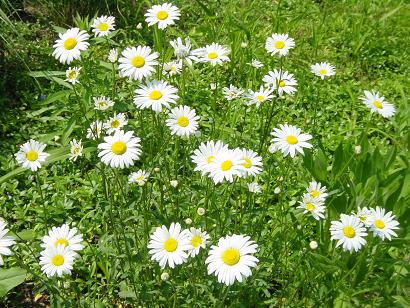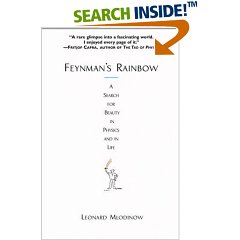Welcome to Story Tuesday. :) Here are other places you may want to check out on Story Tuesdays!… Dave’s site and Jason’s writing area.
Anthills are little hills of sand, in which an entire ant population can live. Anthills look like upside-down ice cream cones – the base of the anthill near the ground is wide and the tip of the anthill is just one small grain of sand.
One day, an ant wanted to build the tallest anthill that he could. He was a small ant, and he didn’t think he could build the tallest anthill just by carrying the most sand. He knew many ants had to work together to build massive anthills. Now we all know how anthills are made – ants start from the bottom, carry enough sand in their little mouths to make a wide base for the hill, and keep building up, higher and higher. Then the queen ant gets the royal privilege of carrying the last grain of sand to the very top of the sand hill, and when she drops that grain of sand onto the anthill, all the ants gather below and they clap their tiny little antlegs, meaning that an anthill has been completed. The small ant wanted to build an enormous anthill – he wanted everyone to be proud of him – his mother ant, his father ant, his two sister ants, and especially the queen ant.
So the small ant got to thinking, “How can I build the tallest anthill there ever was?” And he thought, “Well, I don’t need to make my anthill look like an upside-down ice cream cone. I’ll make my anthill look like a ladder going all the way up into the sky.” And the small ant got so excited by his idea that he started making a plan to match his idea. He said to himself, “I’ll just make all the sand grains stand up straight.” So the ant went to the sand pile (which some might say looked like an unintentional anthill to begin with), and he started carrying back pieces of sand in his mouth. And the small ant put all the grains of sand in one spot, and the spot started growing higher, and the ant was so excited. The ant’s mouth was sticky when he carried the sand to his new tallest anthill, and so that stickiness made the sand stick together. But then the ant looked closer at his new tallest anthill, and he saw that his anthill was beginning to drop away – his anthill had a thin top and a wide bottom, and the small ant kept taking sand from the bottom and moving it to the top, but the sand would just come down again and again and make a wide bottom and a thin top. Then the ant started licking the sandpile up because he knew that when he saw little children lick an ice cream cone up, then the ice cream cone changed its shape and grew taller. But, alas, every time, with every one of his licks, the sand kept falling back down to make a wider base and a thinner top.
So the ant grew quite sad, and he went walked around the woods, with his head down, very very sad. And then he came to a tree and he sat underneath that tree, and he started crying because he still wanted to build the tallest anthill, but he didn’t know how.
All of a sudden, he felt a leaf on his shoulder, “There, there,” said some part of the leaf, “Why are you crying on such a marvelous day – you should be playing and celebrating.”
“Oh, who are you?” asked the ant.
“I am the grapevine that grows along this tree, see? Look up, and you will see me all around the tree, my leaves growing up and up and up. Why are you crying?”
“I wanted to build the tallest anthill, but the sand kept falling down…and…” and then the small ant started crying again.
“Oh, that’s not so bad,” said the vine.
“What do you mean it’s not so bad?”
“Well,” answered the grapevine while moving her leaves to emphasize what she was saying, “There are many ways to make something tall.”
“Why? How do you mean?” asked the ant, and with that he stopped crying.
“Well, look at me for instance. I am not very strong, but I am very tall because I hold on to the tree delicately along each of my leaves.”
“How do you get to be so tall?” asked the small ant.
“I started from the bottom, and kept reaching up, and every time a new leaf of mine grew, I made a small bond to the tree, a light hold, just to hold me a little taller.”
“Oh!!” said the ant, suddenly getting his energy back, “maybe I can make my anthill very tall too!”
“Maybe you can. Enjoy the marvelous day,” said the vine.
“Thank you! Thank you!” said the ant and ran back to his home.
Suddenly the ant knew how to make the tallest anthill. The small ant went back to the sandpile and brought over some grains of sand in his mouth, and he pushed the grains of sand into the tree bark to make the sand stick, and the sand stuck. So the small ant climbed his tree-anthill and put more grains of sand on top, and more, and more, and soon the anthill was going up into the sky.
Now the ant had chosen a very tall tree, so tall that the ants could not see where in the sky the tree ended, and the small ant wanted to build the tree-anthill right up into that nothingness, into that sky at the top of the tree. The small ant kept building all day and even when it was dark out, he kept building all night, and in the morning, the anthill went right up the tree into the sky, into the nothingness.
Then all of his ant friends came and they ooed and ahhed, and asked, “but how did you know to build such an anthill?” The ant smiled to himself because he knew the vine had helped him. Then the ant invited the queen ant to carry the last grain of sand up his tree-anthill. And once she had come down, everyone clapped for the ant with the great idea for the tallest anthill!

